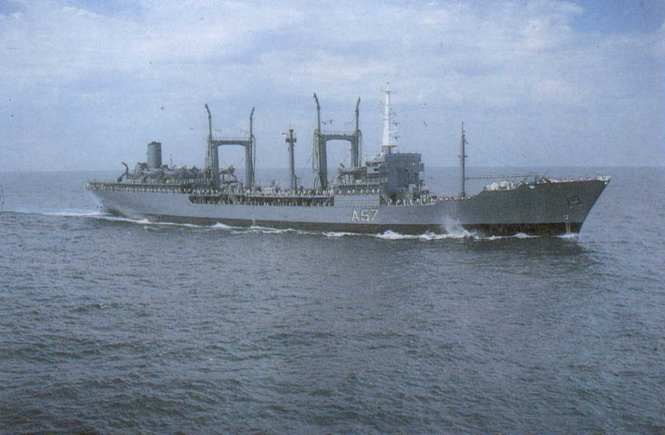“Chicken! Chicken![]() 🐔!”
🐔!”
At the height of one-upmanship between the Americans and the Soviets, they would send uninvited observers for each other’s naval exercises. These would be in the form of ships, submarines or aircraft. The submarines were the most dangerous. They would surface in the midst of a rival ships formation, making the formation to suddenly alter course to avoid collision. Observing this, the submarine would signal: “Chicken! Chicken!” on its signalling projector.
This Chicken game was one game about which you could read hundreds of such news items as: Russian and American Pilots Play ‘Chicken’, as in The New York Times of 22 Nov 1970. The interesting thing is that it is still going on (Read: ‘Russia Is Playing a Dangerous Game of Chicken With U.S. Forces In the Baltic’ reported in the Maxim on 14 Apr 2016).
Sometimes, serious accidents took place because of such disdain for each other. We, in the Indian Navy too, since Navy operates in international waters, have faced such close to dangerous buzzing by both Soviet and Americal planes. In the 1980s, when the Indian Navy shifted tack from acquiring old British ships to having new Kashin-II class destroyers that were built by the Soviets for us, the kind of snooping to know about the platforms became intense. One of the British ships visited Mumbai during those days and was docked at the commercial docks (Ballard Pier) close to our own Naval jetties. Divers from their ship attempted to espy on the underwater fittings (Sonar domes etc) of the Kashin-II class destroyer (we called them simply Rajput class, named after the first of those ships: INS Rajput).
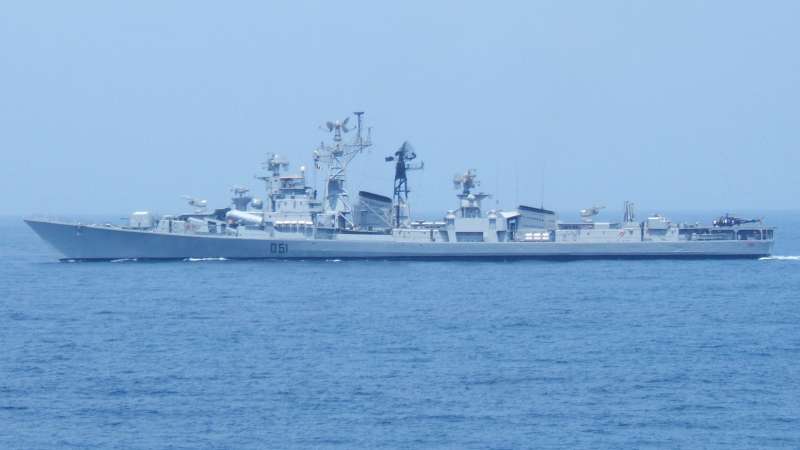
Marking and Counter-marking are the words used nautically for what an observer/intrider does and what a ship designated by the rival force does to keep the Marker under close surveillance. These terms, as you would have guessed, have been taken from Football (eg, man to man).
I was on INS Ganga when we were sent to observe Pakistan Navy’s annual Sea Spark exercise. PN had six refurbished Gearing Class destroyers at that time named, Shahjahan, Tariq, Taimur, Tughril, Alamgir and Tippu Sultan. It was nice to see all six operational during the exercise.
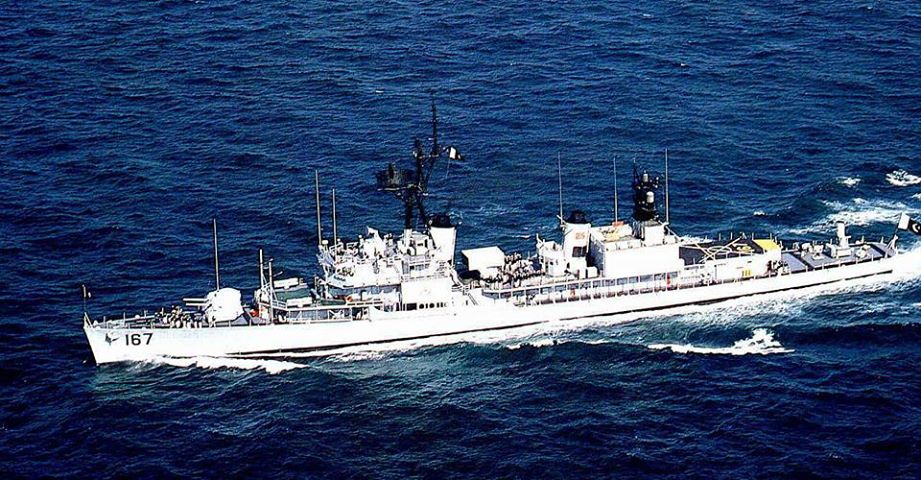
Tughril was directed to be a counter-marker to us and it was literally on our tail throughout, sometimes dangerously close. It interfered with our navigation on numerous occasions. At one point it was very close to us and it was one of the five times in the day (as Sunnis do) for Namaz. We could see the entire ship’s company, wherever they were, on their haunches for Namaz and we were wondering who was running the ship so close to us.
After the first phase of Sea Spark got over, we traversed South to fuel from the tanker INS Shakti commanded by Captain Frank Richard Clarke. During abeam fueling, the ships are connected by a fueling hose and hence only about 100 to 160 feet apart. It requires skillful navigation by both ships to maintain precise stations so close. A fueling run lasts for more than an hour and in case of an aircraft carrier, it would be hours before ships disengage. Here is a much later day picture of a US Ship and Japanese Ship alongside INS Shakti for replenishment:
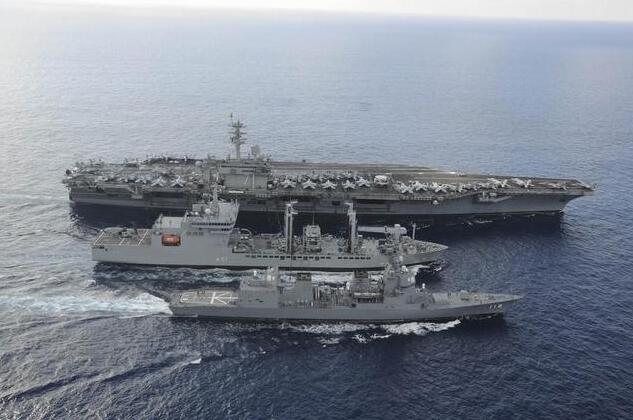
As we on Ganga, took so station on Starboard (right) side of Shakti, we suddenly noticed Tughril having taken up station at equal distance on port side of Shakti.
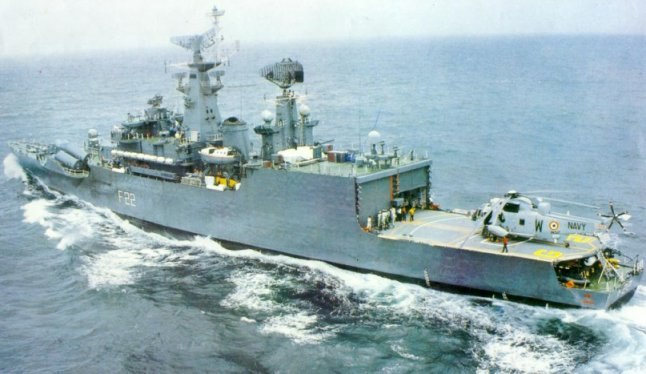
Tughril signalled to Shakti: Can I have some fuel too?
Captain Clarke signalled back to him, tongue in cheek: Yes, but you will have to pay in US Dollars.
Promptly Tughril signalled: I thought Indian Navy accepted Roubles only.
In that brief exchange, the realities of those times were succinctly conveyed.
And now, 32 years later, they are Trumped by the US!
